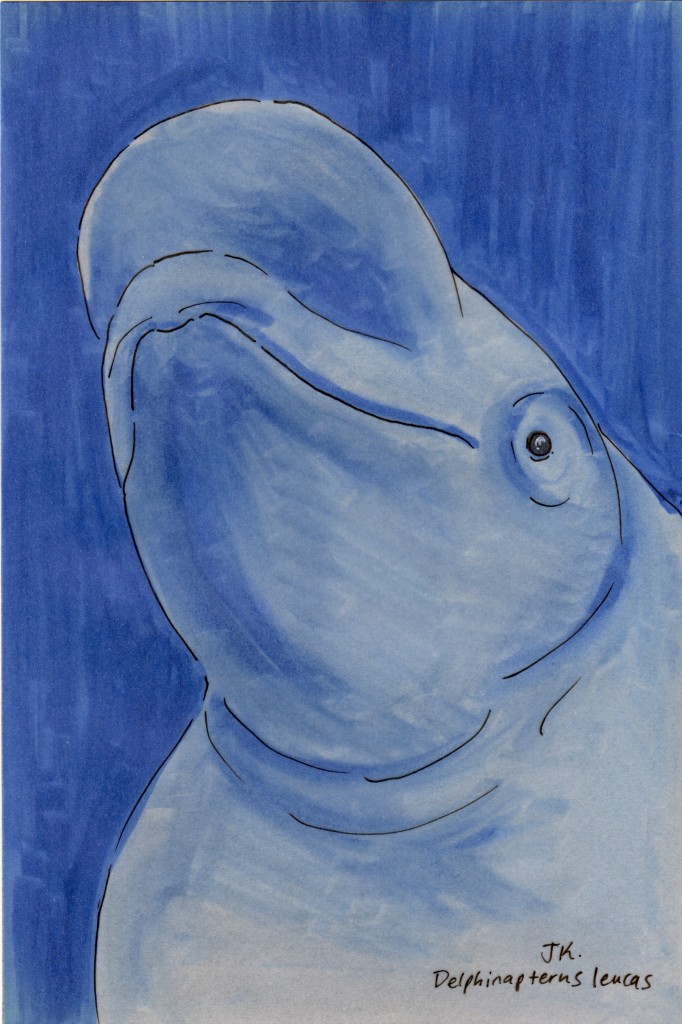Mammals of Alaska Week: Beluga Whale (Delphinapterus leucas)
The beluga whale lives throughout the arctic waters of the world. It’s gray when it’s born and gets lighter until it’s five or six, at which point it’s completely white. Belugas have been called sea canaries because of their elaborate echolocations and vocalizations. Overall, they’re doing pretty well, population-wise, but some subpopulations are threatened, generally by hunting, climate change, habitat loss, or sea traffic.
The melon-like bulge on the top of the beluga whale’s head is called a melon! According to the American Cetacean Society, “The rounded melon on its head contains oil, and the whale can change the shape of the melon. Scientists believe that the melon plays a part in the beluga’s echolocation system.”
You can listen to the beluga whale’s many different sounds at this page on the National Geographic website, and you can listen to Raffi’s wonderful song “Baby Beluga” on his MySpace page (highly recommended!). “Baby beluga in the deep blue sea, swim so wild and you swim so free. Heaven above you and the sea below, and a little white whale on the go…”


Wow! That’s a great drawing, and a crazy whale!
You mentioned that the whale can change the shape of the melon on its head, and that people think they use the melon to aid in their echo location work. Are those two related, do you think? Do they change the shape in response to sounds they pickup on, like moving a radio dish to get better reception?
Very nice drawing! I love belugas and these two look very friendly. I read somewhere that the average IQ of belugas is about 155 – very impressive!
Leah, thank you! I wonder how you would measure a whale’s IQ? They do seem quite intelligent. Do you know Raffi’s song?
Ted, I’ve done some research, and you have the melon exactly backwards. It’s pretty neat, actually. Basically, belugas produce rapid sequences of clicks called trains. A “click train” is produced in the beluga’s nasal area beneath its blow hole. It passes through the fatty melon, which “is thought to act as an acoustical lens, focusing the sound waves into a beam, which is then projected forward into the water in front of the whale in a particular direction,” according to Conservation Today’s synopsis of a scholarly paper on the subject.
The sound waves bounce off of nearby objects and echo back to the beluga whale, who receives the sound in “fat-filled cavities” of its jaw bone!
I love Beluga Whales. I used to look like one when i was fatter! Good answer about the “melon”, J. R. I was thinking of responding while i was reading that but you beat me to it.